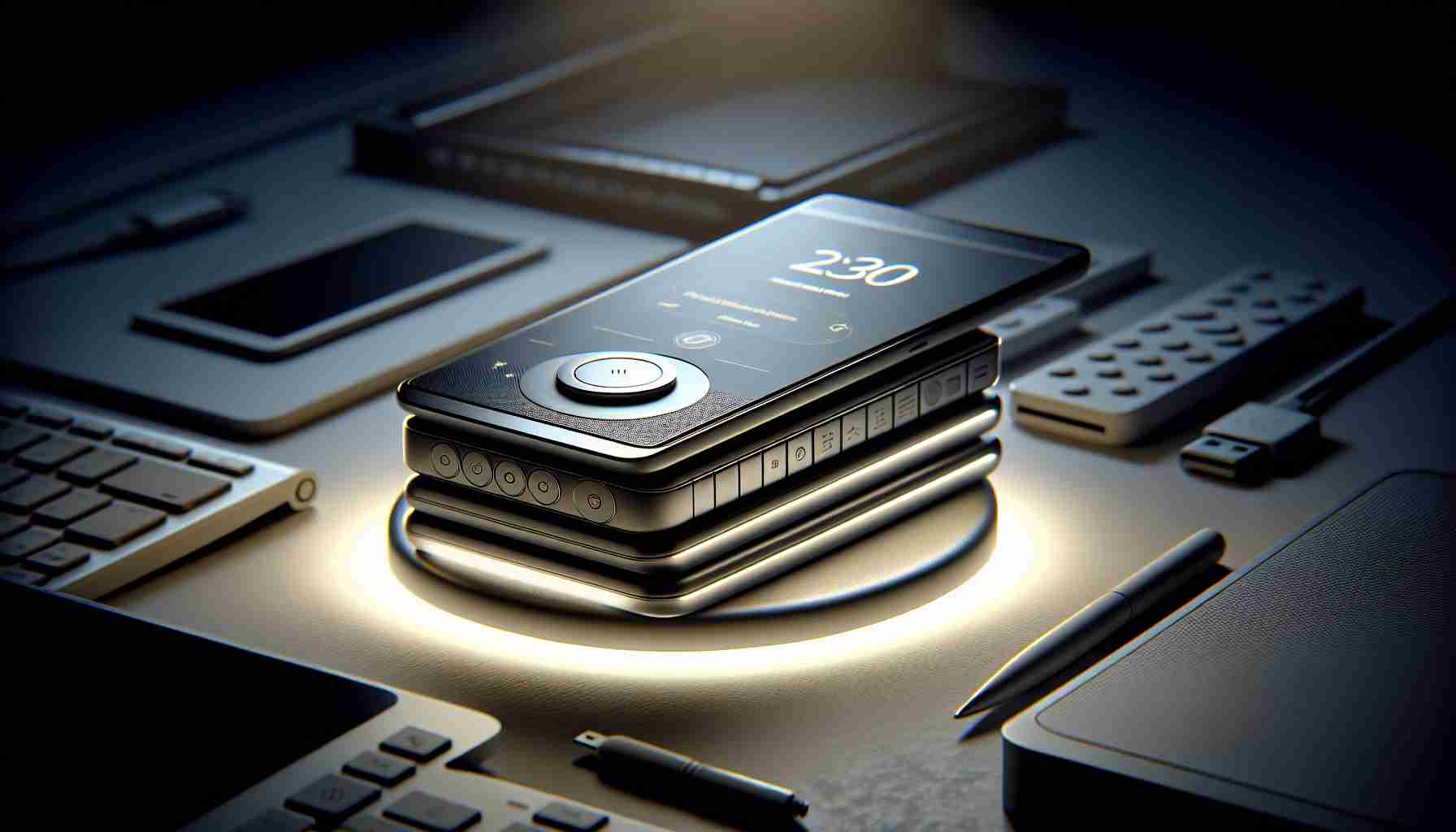In an era where smartphones are becoming increasingly complex, a particular manufacturer is taking a strikingly contrary approach by offering a phone that is fundamentally simple: the Light Phone III. This device is a refreshing pivot from the feature-heavy phones prevalent in the market, prioritizing ease of use and minimalism.
Light Phone has always been synonymous with basic yet functional handsets—devices without traditional apps, designed for everyday essential tasks. In its latest iteration, the Light Phone III offers a monochrome OLED display of 3.92 inches, significantly enhancing the readability of texts and schedules without the distractions of internet browsing or email.
The principle behind the Light Phone III is straightforward: providing a means of communication without the typical trappings of modern smartphones. Despite its simplicity, it incorporates tools that facilitate daily tasks. Highlights include a straightforward camera with a dedicated physical button, NFC chip capability for contactless payments, and also features such as a music and podcast player with a powerful front speaker, alongside utilities for note-taking, voice recording, and GPS for navigation.
Design-wise, the phone adopts an unconventional stance, being wider but distinctly shorter than the usual smartphone. A metallic frame lends it a sturdier, more elegant look, coupled with a brightness adjustment wheel for user convenience. Additionally, the phone integrates a fingerprint sensor in the power button for heightened security.
The Light Phone III is designed with universal 5G connectivity, making it a global device, and Light also offers its own telecom service starting at 30 dollars monthly for 1 GB of data. With an impressive bump in the hardware department, the phone sports 6 GB of RAM, 128 GB of storage, and a Qualcomm Snapdragon 4 Gen 2 processor, alongside an almost doubled battery capacity of 1,800 mAh that remains user-replaceable.
Despite its significant price jump to 799 dollars from the previous generation’s 299 dollars, early adopters are rewarded with a 399 dollar pre-order special. As a well-established company—and not a crowdfunded project—Light’s pre-orders play a pivotal role in spurring production with Foxconn. The first deliveries are expected in January 2025 following three production phases.
TechCrunch reports that Light began as a Kickstarter initiative aimed at individuals seeking to curb smartphone addiction, appealing to a demographic primarily aged 25 to 40. With the Light Phone III, the brand aims to expand its reach to users who desire an uncomplicated primary device, a stark contrast to the tech-laden alternatives. This reflects Light’s fundamental concept: a phone that lets you communicate and do little else, freeing users from the habitual screen-time of conventional smartphones.
The topic of minimalism in technology, particularly in the emergence of devices like the Light Phone III, is increasingly relevant as consumers grow more aware of the impact that constant connectivity and smartphone addiction have on their mental health and daily lives. As an antithesis to the ultra-capable smartphones that dominate the market, the Light Phone III represents an alternative approach that focuses on basic functionality and reduced distractions.
Important Questions and Answers:
– Why would someone choose the Light Phone III over a traditional smartphone? Consumers may choose the Light Phone III to reduce stress and distractions caused by the plethora of apps and notifications on typical smartphones. It encourages a more intentional and less disruptive use of technology.
– What are the key features of the Light Phone III? Notable features include a monochrome OLED display, camera with a physical button, NFC for contactless payments, music and podcast player, note-taking, voice recording, and GPS navigation. It also features a metallic frame, brightness adjustment wheel, fingerprint sensor, 5G connectivity, 6 GB of RAM, 128 GB of storage, and a Qualcomm Snapdragon 4 Gen 2 processor.
Key Challenges and Controversies:
– The most significant challenge for the Light Phone III is its market penetration. Convincing consumers accustomed to feature-rich devices to adopt a minimalistic phone might prove difficult.
– Another challenge is the high cost of the device compared to previous generations, which may deter potential customers.
– There could be a controversy regarding the balance between minimalism and functionality. Some users might feel that certain “essential” smart features are missing, whereas others might find it liberating.
Advantages and Disadvantages:
– Advantages: The Light Phone III offers a distraction-free experience, potentially reducing smartphone addiction and improving mental health. It embodies digital minimalism, promoting intentional use of technology.
– Disadvantages: The Light Phone III may not fulfill the needs of those who rely on their smartphone for various applications beyond basic communication. Furthermore, the high cost might not justify the limited functionality for some users.
For those interested in exploring the concept of minimalism in technology or further research on products like the Light Phone, you can visit notable technology and gadget websites. Here are a couple of suggested related links:
– TechCrunch for technology news and analysis.
– The Verge for in-depth reporting on the intersection of technology, science, art, and culture.
These websites often provide up-to-date information on the latest tech developments and insightful articles on lifestyle and the impact of technology on society.
The source of the article is from the blog publicsectortravel.org.uk
